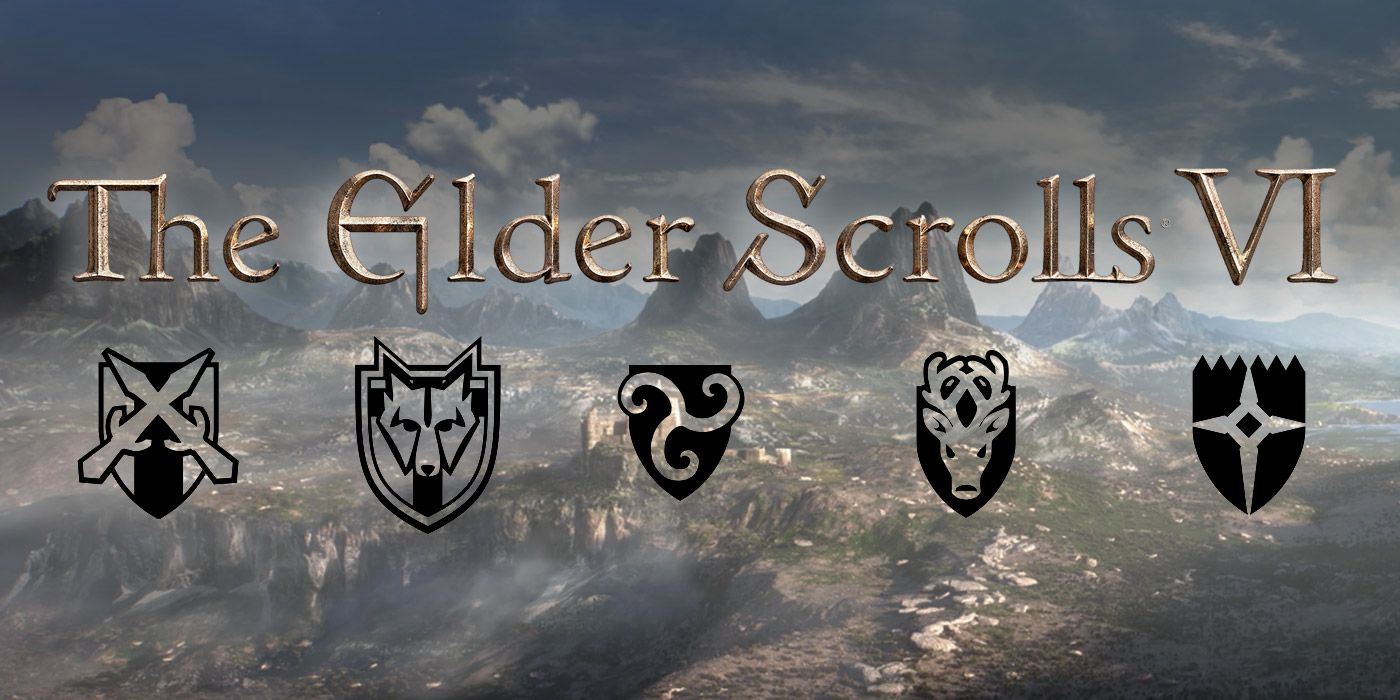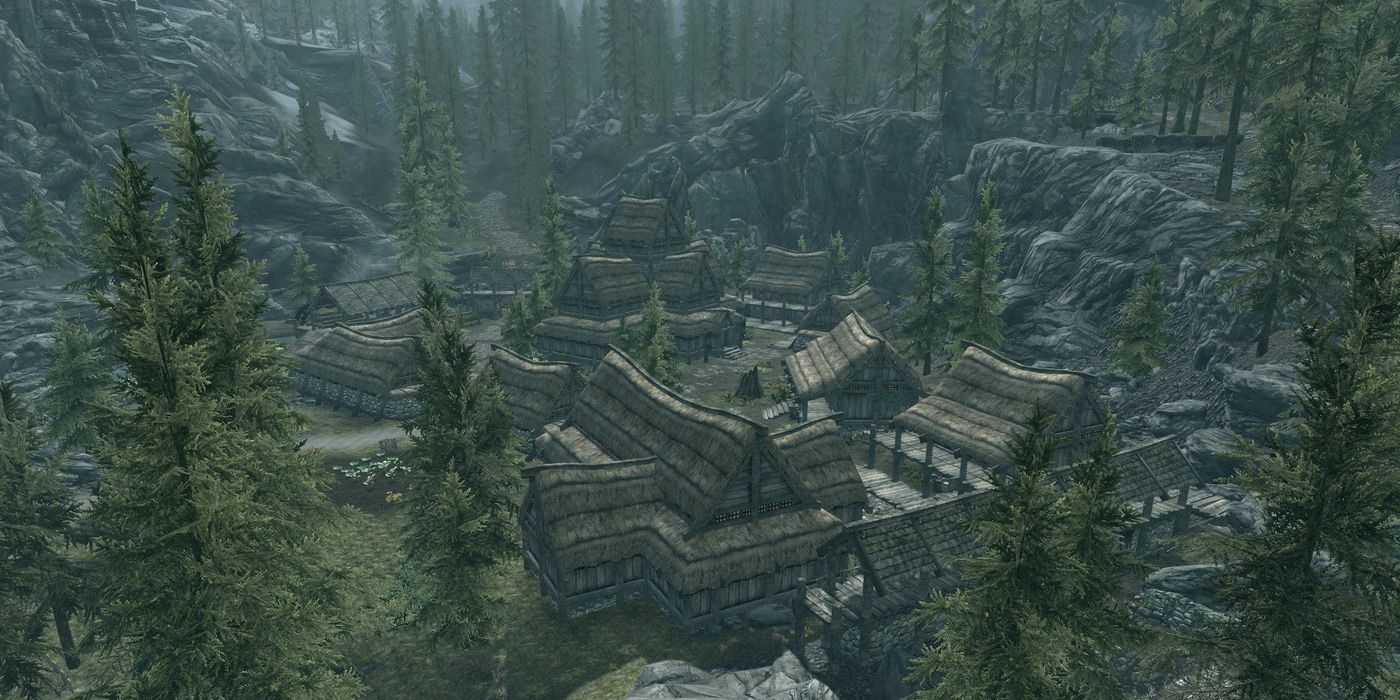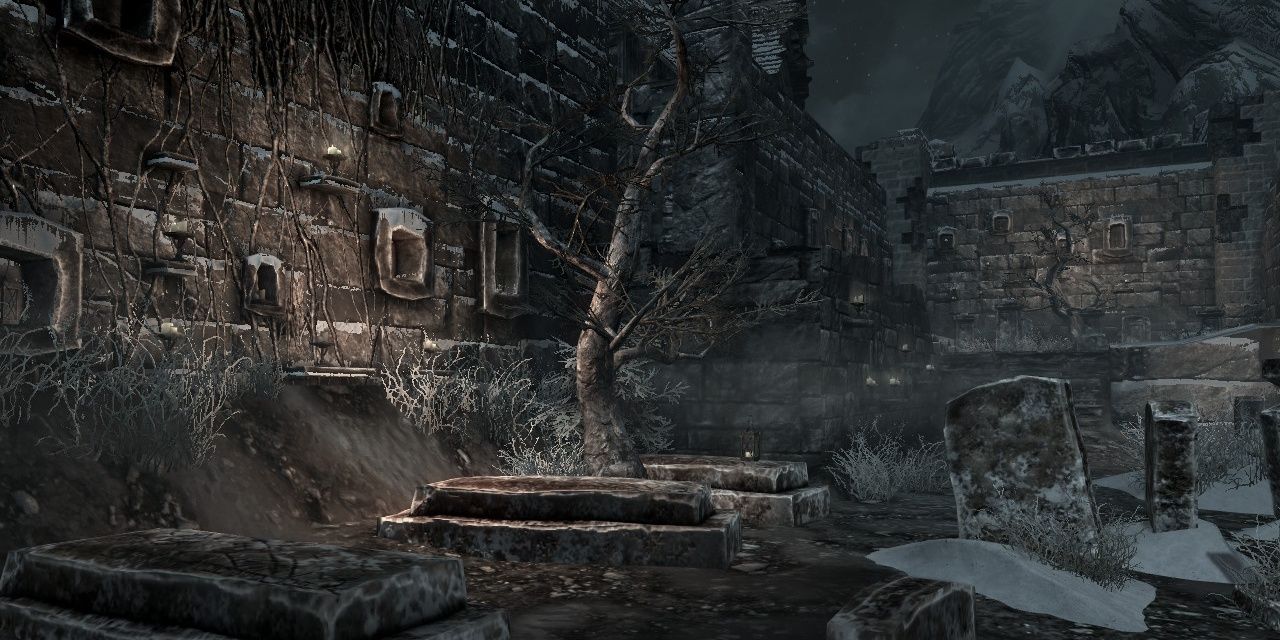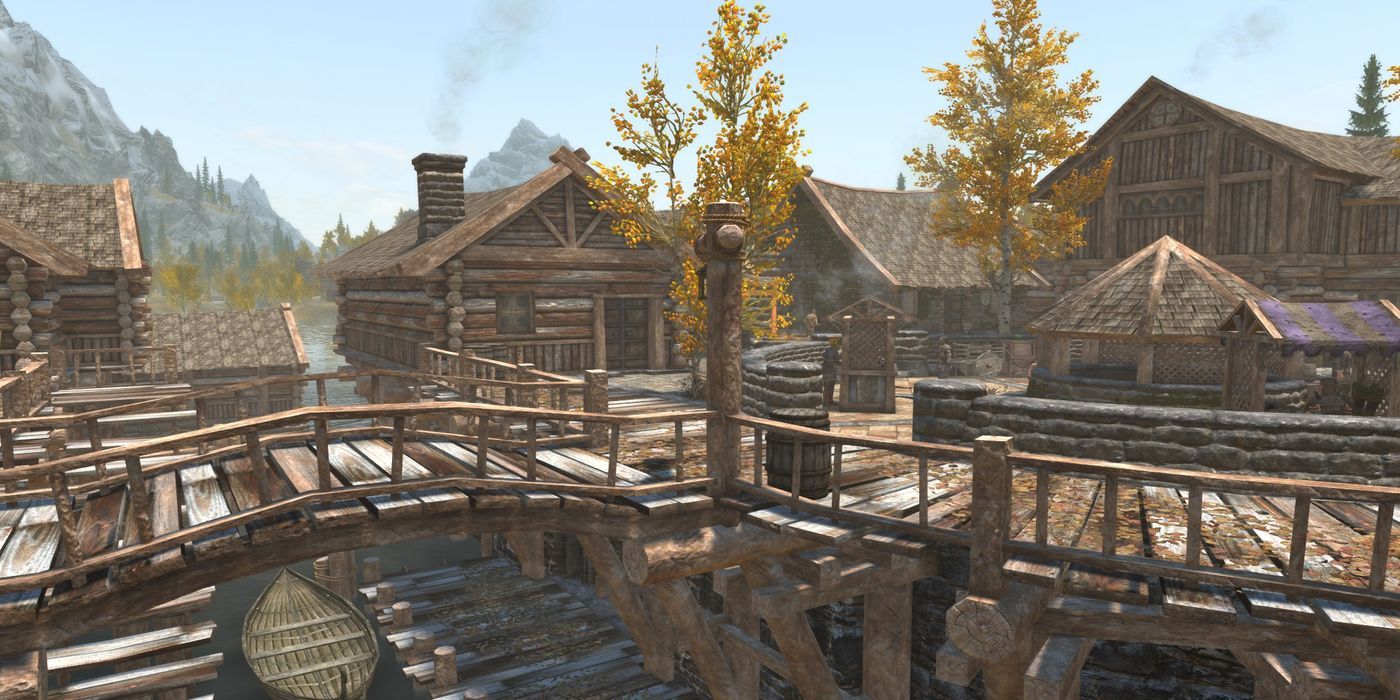Todd Howard has claimed in an interview at Brighton Digital 2020 that The Elder Scrolls 6 will have expansive cities that are larger than those in previous Bethesda titles. This will come as extremely welcome news to many fans of the series, with some of Skyrim’s cities being so small that they had only 20 inhabitants, a huge and immersion-breaking difference between their rendering in-game and their descriptions in the lore and in NPC dialog.
Developing more realistically sized medieval-style cities could be key to the success of The Elder Scrolls 6. With few large cities in recent Elder Scrolls games outside of Oblivion’s Imperial City itself, creating urban centers in the next game could create a breadth of roleplaying opportunities which were simply not available in previous titles. To see the extent to which The Elder Scrolls could benefit from larger cities, players need only look to some of the key city questlines in Skyrim and the ways in which their ambitious premises were limited by the scope of their settings.
Skyrim’s Cities
Skyrim’s cities are small. They are far more like forts than any actual medieval city, they have almost no expansion beyond their walls, they have almost no agriculture, and there is a disappointing disparity between how they are talked about in the game versus what players see. Nazeem in Whiterun, for example, will infamously ask players if they get up to the Cloud District very often. This isn’t particularly immersive even as an act of snobbery when the Cloud District is composed of a single building which can be reached by running for about 30 seconds away from the city’s entrance.
A few cities in Skyrim work better than others. Despite their sizes, cities like Riften, Solitude, Whiterun, Markarth, and Windhelm all have distinct cultures, architectural styles, and local problems from thieves to guard corruption to werewolves to vampires. Smaller cities like Falkreath, Morthal, and Dawnstar, however, are composed of a few similar-looking houses and have very few NCPs living in them. Some mods like JK’s Skyrim have done great work to distinguish these locations local aesthetics and to make these areas denser, but Bethesda’s serving is still too small to be truly immersive.
Cities and Stories in Elder Scrolls Games
This negatively affects some of the best stories told within Skyrim’s cities as well. Blood on the Ice, for example, is a great quest-series which begins in Windhelm where the player suddenly finds themselves thrown into the role of noir detective, hunting for a mysterious serial killer in Windhelm’s gloomy streets and back alleys. The problem is that Windhelm is only composed of about 4 streets and two alleyways. The mystery's sense of scale is undermined, and it's hard to imagine how an area so small could see a serial killer get away with anything.
Other areas like the Gray Quarter are supposed to be home to the city’s segregated Dunmer population, and yet instead of feeling like a fully fleshed out neighborhood with its own culture, The Gray Quarter is a single road with Morrowind flags hanging from its buildings. Part of the problem is that the lore players are presented with is genuinely inviting and exciting, which brings the games’ inability to bring that lore to life in its cities into unfortunately sharp focus. Skyrim’s city problem also does a number on the effectiveness of its Skyrim Civil War questline. Sieges become twenty-man raids that last 10 minutes and determine the fate of the province.
Having larger cities could be fantastic news for the types of story that The Elder Scrolls 6 is able to tell. Stories like Blood on the Ice which attempt to lean into the urban setting would be able to fully flourish in genuinely large towns and cities where players really could discover hidden areas, investigate clearly delineated neighborhoods, and could realistically believe that they’re in a dense center where a single person might go unnoticed.
The Elder Scrolls 6: Cities and Roleplaying
This could also allow the diversity of different cities to flourish in terms of architectural styles. If The Elder Scrolls 6 takes place at least partially in Hammerfell as some rumors have suggested, players might be able to explore areas of certain cities which have a significant elven or orcish presences. These demographics could be reflected in the design of fully fleshed out neighborhoods in a way that areas like the Gray Quarter could not achieve due to their small size. The difference between a city’s slums and its rich neighborhoods could feel far more pronounced than in Skyrim’s cities where those neighborhoods are still just a few in-game feet apart.
Most importantly, however, by creating significantly larger towns and cities in The Elder Scrolls 6, Bethesda is opening up the game to a greater diversity of roleplaying opportunities. In Skyrim, cities were interesting stopping points, but could quickly be explored in-full and feel suddenly spent. The Elder Scrolls 6 has the potential to create cities with stories which unfold at a far slower pace, with players incentivized to spend more time in cities and towns than they have in previous games.
Instead of there only being one house per city that players can live in, players may be able to choose different neighborhoods and meet different, more fleshed out NPCs. The immediate inaccessibility of richer districts and palaces where city rulers live may make them feel far more genuinely powerful than the palaces a Skyrim player could simply run to straight from the city gate. More communities living with the city walls could help weave more interesting dynamics between different city demographics, enabling the game to tell more complicated stories.
If nothing else, larger cities will feel more immersive, and paired with the large game-world confirmed with The Elder Scrolls 6’s focus on procedural generation to create its landscape, could help create a game which feels far more immense than previous installments. It will be a lot of work for the next Elder Scrolls title to step out of Skyrim’s shadow, but if the developer makes good on its promise to expand cities and towns, the game may be on the right track.
The Elder Scrolls 6 is in development.




